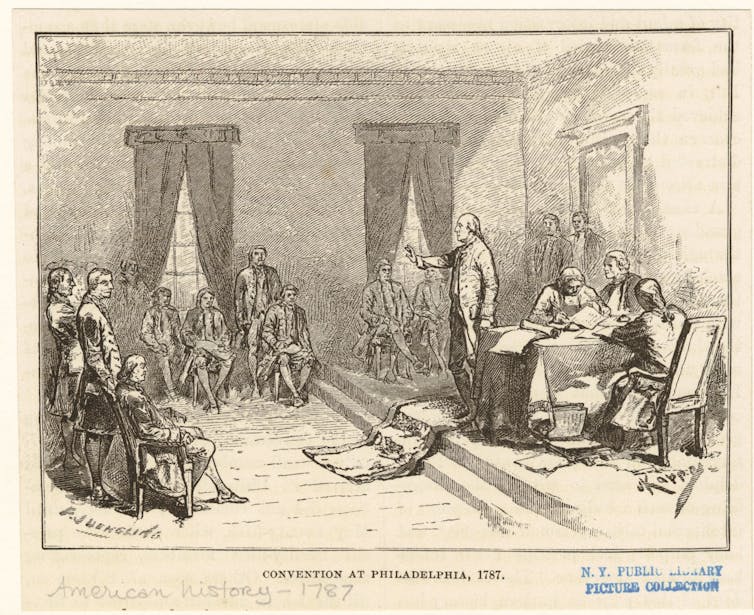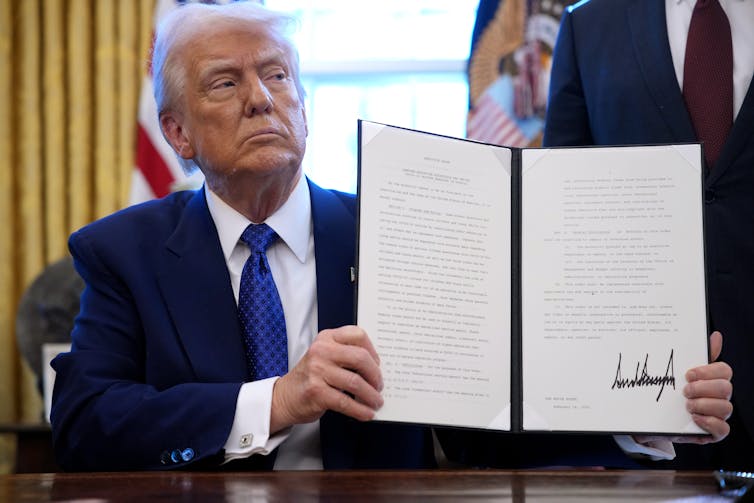 |
| In attenuated blues, a portrait is depicted on a dress in Erdem's AW25 collection at the British Museum in London. |
Beneath the soaring glass roof of the British Museum's Great Court, Erdem Moralioglu unveiled a collection that felt like a whisper from the past: haunting, poetic, and deeply personal. This was not just fashion but a meditation on memory, brought to life through collaboration with artist Kaye Donachie, writes Isabella Lancellotti. Photography by Jason Lloyd Evans
 |
Column dress with portrait in hand-embroidered organza appliqué at the Erdem show |
It was an image imbued with both nostalgia and abstraction, a poetic echo of memory. This moment, opening Erdem Moralioglu’s Autumn/Winter 2025 collection, set the tone for a show that blurred the lines between fashion and fine art, reality and recollection.
At the heart of the collection was Erdem’s collaboration with British artist Kaye Donachie, a painter known for her moody, atmospheric depictions of women: figures from history, memory, and imagination, rendered with an ethereal touch.
Their partnership was rooted in personal history. Both artists studied at the Royal College of Art, but it wasn’t until much later that their creative paths intersected when Erdem commissioned Donachie to paint a portrait of his late mother. That experience, and the way Donachie conjures past lives through paint, became the catalyst for this evocative collection.
Together, designer and painter conjured garments that blurred the line between art and attire, history and imagination, each piece a canvas, each silhouette a brushstroke in a collection that lingered in the mind long after the final look had vanished into the museum’s shadows.
At the heart of the collection was Erdem’s collaboration with artist Kaye Donachie, a painter known for her moody, atmospheric depictions of women
 |
Peplum jacket with exposed seams and a sculptured full skirt in tweed and sequins |
Some pieces played with the concept more subtly: a fitted bodice in bonded canvas with hand-painted detailing, a sculptural coat that carried the impression of an artwork layered within its folds.
The collection’s silhouettes were a study in contrast: bold, architectural forms softened by diaphanous textures. Erdem’s signature feminine aesthetic remained intact, but with an added depth. Column dresses featured slashed necklines, a subtle nod to the fragmented nature of memory. Cocoon coats enveloped the body in textured cloqué and glossed sequins, while bell-shaped skirts and draped bodices suggested movement, as if caught mid-brushstroke.
The color palette felt at once subdued and charged with emotion. Deep, inky blues and ghostly greys recalled Donachie’s atmospheric paintings, while delicate antique pinks and muted apple greens brought warmth and romance. In some instances, abstract floral prints overlaid technical satins, resembling faded blooms pressed between the pages of an old book.
Accessories also played a crucial role in tying the collection to its artistic roots. The Bloom bag, one of Erdem’s signature styles, was reimagined in hand-painted iterations by Donachie herself. These small yet striking pieces reinforced the theme of wearable art, offering an intimate, tangible link between the painter’s brush and the wearer’s hands.
The collection’s silhouettes were a study in contrast: bold, architectural forms softened by diaphanous textures
 |
Soigne black cloque dress with applique rose detail in white |
Erdem has long been fascinated by historical narratives, often drawing from forgotten or overlooked figures. This season, however, the storytelling took on a more personal resonance.
The references weren’t to a specific muse or time period but rather to the idea of memory itself: how it shifts, distorts, and lingers. The final looks reinforced this theme: skeletal corset dresses in technical organza, layered with the faint impressions of Donachie’s portraiture, suggested the ephemeral nature of both art and life.
By the time the last model disappeared up the staircase at the British Museum, the audience was left with an impression that extended beyond fabric and form. This was a collection that asked its viewers to consider the weight of history, the echoes of past lives, and the way fashion ~ like painting ~ can serve as both an archive and an act of imagination.
In an industry often driven by fleeting trends, Erdem’s
Autumn/Winter 2025 collection stood as a meditation on permanence, on the
enduring power of memory captured in fabric and pigment. It was, in Donachie’s
words, a series of “footnotes in time,” rendered with the sensitivity of an
artist and the precision of a couturier.
Scroll down to see more highlights from Erdem's AW25 collection in London




























































